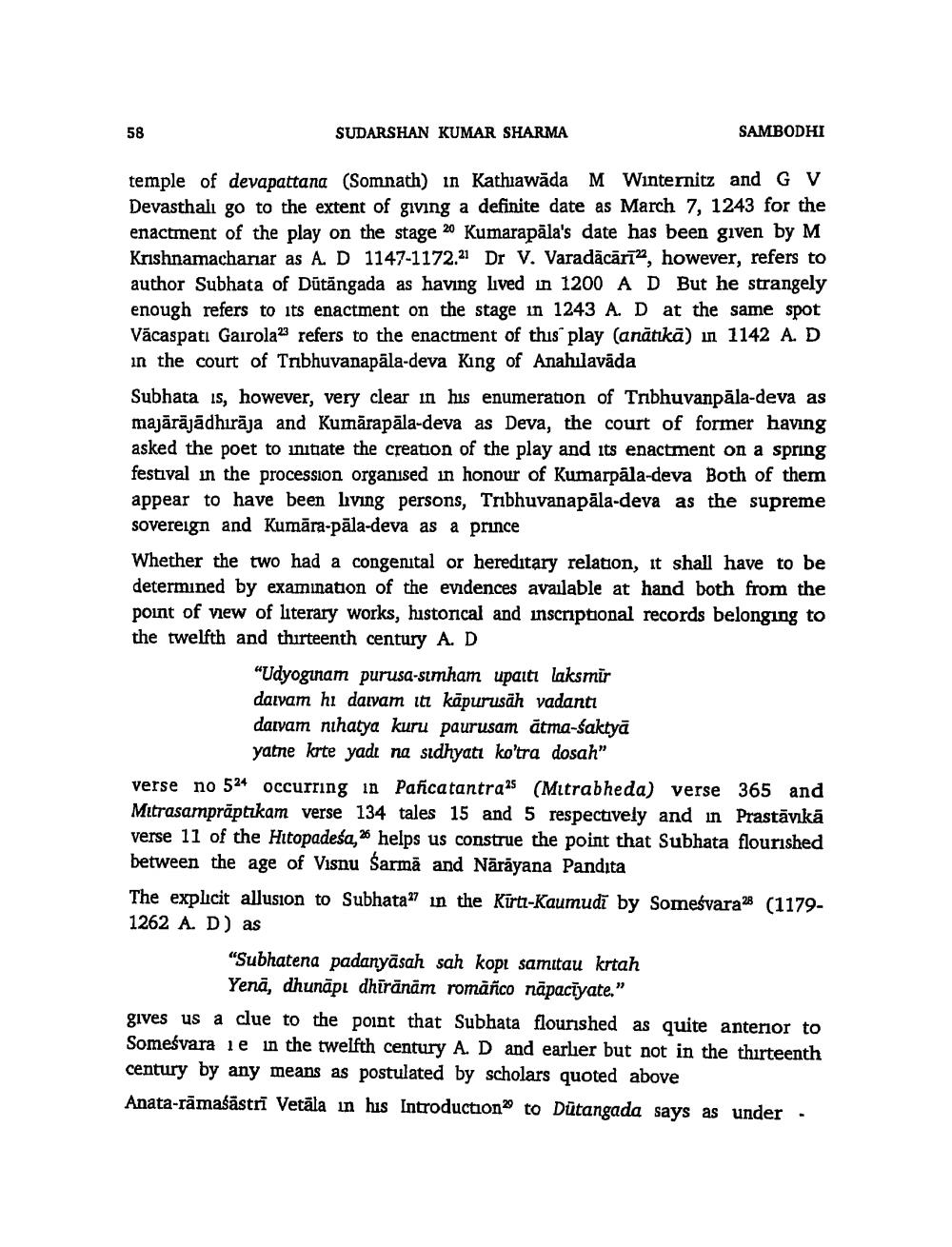________________
58
SUDARSHAN KUMAR SHARMA
20
temple of devapattana (Somnath) in Kathiawäda M Winternitz and G V Devasthali go to the extent of giving a definite date as March 7, 1243 for the enactment of the play on the stage Kumarapala's date has been given by M Krishnamachanar as A. D 1147-1172. Dr V. Varadäcäri", however, refers to author Subhata of Dütängada as having lived in 1200 A D But he strangely enough refers to its enactment on the stage in 1243 A. D at the same spot Vacaspati Gairola" refers to the enactment of this play (anātikā) in 1142 A. D in the court of Tnbhuvanapala-deva King of Anahılavāda
SAMBODHI
Subhata is, however, very clear in his enumeration of Tribhuvanpala-deva as majārājādhirāja and Kumarapala-deva as Deva, the court of former having asked the poet to initiate the creation of the play and its enactment on a spring festival in the procession organised in honour of Kumarpala-deva Both of them appear to have been living persons, Tribhuvanapala-deva as the supreme sovereign and Kumāra-pala-deva as a prince
Whether the two had a congenital or bereditary relation, it shall have to be determined by examination of the evidences available at hand both from the point of view of literary works, histoncal and inscriptional records belonging to the twelfth and thirteenth century A. D
"Udyoginam purusa-simham upaiti laksmir darvam ht davam itt kāpurusäh vadanti darvam nihatya kuru paurusam atma-faktyā yatne krte yadi na sidhyati ko'tra dosah"
verse no 524 occurring in Pañcatantra25 (Mitrabheda) verse 365 and Mitrasampräptikam verse 134 tales 15 and 5 respectively and m Prastänkä verse 11 of the Hitopadeśa, helps us construe the point that Subhata flourished between the age of Visnu Sarma and Narayana Pandita
The explicit allusion to Subhata" in the Kirt-Kaumudi by Someśvara" (11791262 A. D) as
"Subhatena padanyasah sah kopt samitau krtah Yend, dhunäpi dhirānām romāñco năpaciyate."
gives us a clue to the point that Subhata flourished as quite anterior to Someśvara ie in the twelfth century A. D and earlier but not in the thirteenth century by any means as postulated by scholars quoted above
Anata-ramasastri Vetāla in his Introduction to Dütangada says as under




